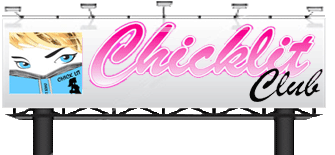


Dorothy Koomson is a journalist and the bestselling author of The Rose Petal Beach, The Woman He Loved Before and My Best Friend's Girl. The Ice Cream Girls was adapted for a TV series in 2013. Her latest novel, That Girl From Nowhere, is out this month. She lives in Brighton, England. (Interview by Jade Craddock)
I had the idea for That Girl From Nowhere about four years ago – it was going to be the book I wrote after The Woman He Loved Before. I wanted to look at the subject of assisted suicide but also at the impact adoption has on a person’s sense of identity and their place in the world.I knew pretty much nothing about either subject when I started, but I thought they’d be interesting themes to explore. At that time, I couldn’t write that book. Nothing seemed to flow or to make much sense. For me, that’s always a sign that I’m not ready to ‘be’ that particular main character. Instead, I wrote The Rose Petal Beach, then I came back to this book. By this time, the characters – especially Smitty – were different and some of the plotlines were different, but the main ideas and themes didn’t change. I found I could tell the story.
Like most people I know in real life, her main strength is that she’s flawed. She doesn’t always do the right thing and she can be pretty selfish, but the main part of her is a good person who tries her best to put other people first, even at great personal cost. Her flaws, rather than being weaknesses, are strengths because they give her a real sense of right and wrong and who she aspires to be.
When I was researching the subject of adoption, like with most things, I discovered that the stories we’re constantly told and shown on the television, films and in books aren’t necessarily the complete story when it comes to real life. I wanted to challenge some of the ideas we have surrounding adoption and its influence on the adopted person’s life.I was very conscious, too, of making sure Clemency was at the centre of it because it is her story and she deserves to not share it with anyone else.
I always think about what happens to my characters beyond the margins of the book – even years later I mentally ‘check-in’ with them in my head and wonder what they’re up to all this time later. With Clemency and the other characters I have an idea of what happens to them, especially the ones whose storyline isn’t resolved in a clear-cut manner. My ideas about what happens to them may change with time, though, especially if the law changes as many people want it to do.
I think of my books as emotional thrillers and I love to write them because the focus is on the emotions involved with the characters even if there is a crime to be solved. It’s challenging and interesting to meet a whole new set of people who have a wide range of problems both external and internal.
I love teasing people with titbits of information that add to what they already know and each titbit helps to build the complete story. That doesn’t mean I withhold info just for the sake of it, more that I find myself constantly trying to figure out the twist in certain shows and books, and I like to create that enjoyment for other people.
The types of stories I tell have changed in that the later ones often have a crime as one of the subplots, but the absolute focus of all my stories are the emotions of the characters. In one way, my writing has evolved in the sense of tackling different themes, and pushing myself to try new storytelling techniques, but the one thing that hasn’t changed is my interest in and focus on the people in the story.
It’s not only the publishing industry, but society as a whole: I would like to stop the dismissal of certain genres as unimportant, and the reduction of certain people’s stories as too ‘difficult’ or ‘challenging’ to tell unless it adheres to a particular genre.
If you mean popular fiction – I think it’s the same as any other type of fiction in that there is great stuff and not so great stuff out there, but people are reading it and making up their own minds about it.
I’m most impressed by writers who obviously and clearly put their heart and soul into telling a story. As a reader I find it obvious when an author hasn’t put as much time and effort into creating a book as they might have, and that can taint the enjoyment a bit. There are so many books coming out this year that I’m looking forward to so I can’t name them all. But it’s going to be a great year for booklovers.
When I was writing the book I actually started to turn an old uncomfortable pair of earrings into a butterfly pendant – much like Smitty does in the book. (That’s where the idea came from.) I could understand the pain she went through because I felt the same, although she did actually complete the pendant and I didn’t because I had to focus on finishing the book. So, that’s what I would do – I would finish reloving my old uncomfortable pair of earrings into a butterfly pendant.